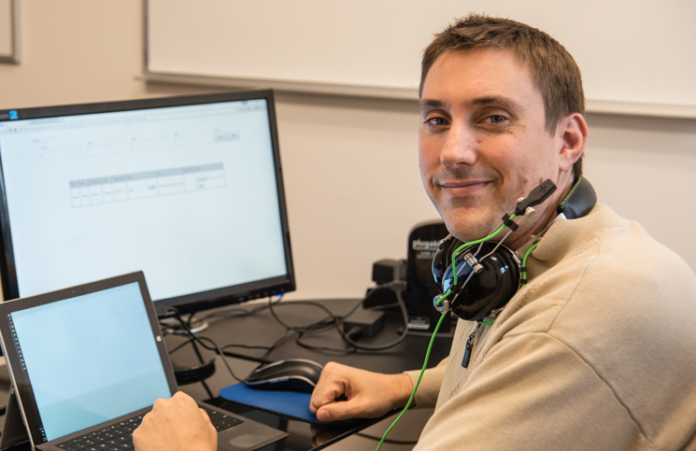People are busy. They have work commitments, they have family commitments, and many have made personal commitments to learn, which are often intertwined with professional commitments. For these fully-scheduled individuals, the flexibility and accessibility of online learning and training is an increasingly popular option.
In 2003, when online learning was still in its infancy, Randy Kohltfarber helped to create Convergence Training, a Vancouver-based creator of industrial training products.
“We developed unique ways to electronically capture, track and report in-person training events through online software and began developing a process to efficiently build 3-D animated training materials,” he explained. “I kept thinking about that old quote ‘A picture is worth a thousand words,’ and I knew that if we could communicate complex topics through 3-D animated images we could provide companies with something that was new and very valuable.”
That desire to communicate led Convergence Training (www.convergencetraining.com) to focus on industrial and manufacturing content and software to help companies reach compliance training goals, and it’s paying off today.
“Certainly we are seeing more companies embrace the idea of conducting training online or at least tracking their training in a digital format,” said Kohltfarber. “We have also again been pushing technology barriers and seeing great customer interest from some of our latest and most innovative solutions.”
One of those innovative solutions, Kohltfarber explained, is a mobile application that integrates with Convergence Training’s Learning Management Software that allows customers to scan equipment barcodes and instantly gain access to instructional YouTube-style videos that show them how to fix a problem.
“Imagine if a new worker came to your apartment to perform the maintenance you requested and he/she could scan a barcode or enter a search term on a mobile device that showed them how to fix a leaky faucet, for example. That type of thing happens all the time in large industrial facilities and we are working to provide digital solutions to fulfill those on-demand skill-building needs,” he said.
Convergence Training is also working to overcome fragmentation in the solutions space, so that systems are integrated with human resources, maintenance and other systems.
As for how online learning is evolving as an industry, Kohltfarber said we’re likely to see more consolidation as smaller, niche firms are acquired by larger organizations looking to expand their consumer offerings.
“Overall, I think this will bring more innovative online training solutions from small entrepreneurs into the mainstream,” he said. “I know we have our developers playing with Microsoft HoloLens and 3-D models of equipment right now to see what we can do to further push the immersive and interactive training experience.”
Finding its place
Despite the strides in online training, it’s not yet seen as a total replacement for classroom or on-the-job training.
Cass Parker, employer services manager at Workforce Southwest Washington, said that the employers she encounters prefer to utilize digital training for very specific tasks, not for broader education.
“Online training comes into play for short-term up-skilling, such as brushing up on a specific task in Excel,” she said. “This type of training is available through ResCare Academy at WorkSource.”
However, even for those who seek less specialized training, such as a broader college course, online learning is an increasingly popular option.
Michael Caulfield, director of blended and network learning at Washington State University Vancouver, said that in his experience, education that blends online learning with face-to-face courses is “the best of both worlds.”
“Students get to experience on-campus learning, to collaborate and get hands-on training in labs, but the online courses promote self-paced learning,” explained Caulfield. “In the past, online courses had been looked down on, as opposed to traditional learning, but I think that’s starting to pass now.”
At WSU Vancouver, Caulfield said students want the ability to pick and choose which classes they take online and which they take in a classroom setting.
“More people want to take an online class for a specific class,” he said. “They might take an intro to psychology class online, but fourth-year ecology students, for example, want to take their capstone course as their face-to-face class.”
At Clark College, the school’s Customized Learning Department offers professional development, community education and mature learning options with online courses and blended courses.
“We work with companies to put together customized training,” said Francois Wevers, director of economic and community partnerships. “The challenge is that we work directly with businesses. It’s a unique problem of scale.”
Wevers noted that the issue of scale (the number of individuals training) will be less of an issue as costs go down.
“We tend to focus on the local and regional markets, but education campaigns that have had a national or region-wide audience have been successful. I think as costs go down, it will be easier to get to the range of 500 to 1,000 users, but we’re just not there yet.”
Michelle Bagley, dean of Clark Libraries and Academic Success Services – a division of Clark College that focuses on for-credit e-learning, with both fully online, and hybrid education programs – said the school is making focused efforts to expand online and blended course offerings.
Clark College is also working with the Microsoft Imagine Academy to create opportunities for Washington residents to create foundational skills and earn professional certifications they can use later.
Starting early
Eric Preisz, CEO of GG Interactive, a Vancouver-based company that creates technology to help educators teach game development and programming, said that the earlier students are exposed to online career training programs, the better – and that’s precisely what his company is honed in on.
“We are focused on training students to become programmers with an emphasis on career and technical education, and project-based learning,” he said. “We think [current computer science education] has a place, but we believe that there is not enough material in high school computer science with a bias toward career readiness as a means to fill the technology job gap.”
Learn more about GG Interactive at www.gginteractive.com.



